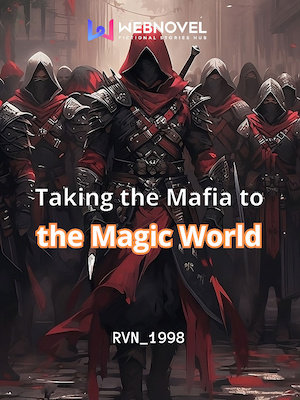Chapter 99:
Chapter 99
The news of Heydrich’s death spread quickly.
“Heydrich is dead in Prague!”
As always, the news was faster than a horse with wings.
Within hours of the incident, it reached Berlin, Moscow, and many other places.
“The executioner of Prague is dead. The governor of Germany is dead!”
Many people who were hiding under the Third Reich cheered for the good news.
They said he was shot in the head by a sniper, they said the brave resistance executed him publicly.
Now the Nazi officials will die one by one, and Germany will fall without a head!The debut release of this chapter happened at Ñøv€l-B1n.
Just like Heydrich’s head was blown off. Hahaha!!
The resistance distributed flyers.
They somehow obtained a photo of him being recovered in a monstrous state, with only half of his jaw and face left.
The flyer had the photo plastered on it.
“Let’s make all the Germans look like this!”
Similar crimes began to occur in Paris, London, Rome, and Madrid.
The resistance groups kidnapped and executed German soldiers or their collaborators, shooting them repeatedly in the left side of their head until half of it was torn off.
Then they dumped their bodies.
Most of them were low-ranking bureaucrats or German soldiers who barely had proper security, but these brutal killings sent a clear message.
‘Get out. Die.’
***
At the Reich Chancellery in Berlin, the Führer was having a tantrum for the first time in a long time.
“Damn traitors! They are all traitors! They all have to be caught and killed!”
“...”
The Führer’s close associates who gathered there kept their mouths shut.
Many of them had been jealous of Heydrich’s rapid rise.
Now that he was gone, his coveted positions would be distributed to others.
Many of the close associates did not feel much regret for his death.
They only valued the information he brought and were annoyed by the Führer’s rage, who cherished him.
The Führer seemed to think that this was some kind of huge conspiracy.
The enemy behind, the wound behind. Because of his fear of that, the Führer always wanted to monitor the defense forces and the entire German society.
The chief of surveillance and the head of the secret police, Heydrich, was also killed not by Czech terrorism, but by a dark organization that reached deep into the Third Reich.
The Führer seemed to believe that. And the ones he pointed out as ‘members of the dark organization’ were...
“Afwehr, they are involved in treason. They must have killed Raeder too. They must be punished! How many divisions can the armed SS mobilize right now?”
“Hail Führer!”
“Shut up! Shut up! How many divisions can you mobilize?”
“...We can mobilize about 40,000 men immediately near Berlin. Two regular divisions and some sub-divisional organizations combined...”
The intelligence organizations like Afwehr were not something that could be crushed by simply counting soldiers.
How could they arrest them when they didn’t know who and where they were captured by them?
It would be more appropriate to leave this matter to Gestapo, who had lost their leader.
Of course, if they were not captured either.
“Raeder wasn’t touched by us, right?”
“Yes. We didn’t do anything to him.”
Hitler seemed to take this as a serious threat to his regime.
Well, if I had planned a coup against Hitler, I would have picked out the pro-Nazi factions in the defense forces one by one, then paralyzed the intelligence organization and executed a beheading operation against the Nazi Party...
But there was nothing really different for us and them!
The coup plotters had no direct physical force. Afwehr had no armed organization to speak of, and SD had more police and secret police forces than them. The ‘conspirators’ who were involved – or seemed to be involved – in the upper echelons of the defense forces also had little control over their troops.
Let’s think about it bluntly. Three types of soldiers were needed for a coup. A top general who would act as a figurehead, a divisional or brigade-level general who would mobilize troops and act as a power broker, and a battalion or company-level officer who would lead the troops and enter the capital.
Among those ‘conspirators’, there were some in the top level. Rommel, the conqueror of Africa, was popular enough to overthrow the Nazi regime and establish a new one.
But the other two types were very scarce.
The only units near Berlin were SS units armed with fanatical loyalty to Nazi Party or Grossdeutschland Division, a regiment-level unit.
Without securing them, there was no chance of success for the coup. Hitler should have known that too, but why did he react so paranoidly...
“This is too good for us! They will be in turmoil for a while, right? It would be even better if they carried out a massive purge of the top brass of the army...”
Rommel, Manstein, Guderian, Model, and not a soldier but Speer.
One of them would be regrettable, two would be acceptable, and three or more would be a great boon.
Afwehr would split off from here, and SD would be torn apart by organizational chaos and suffer from operational difficulties. It’s obvious...
“Now it’s time for us to launch an operation. Is the offensive ready?”
“Yes! Comrade Secretary. Our soldiers are in perfect readiness after two weeks of rest!”
It was a short or long period of time, but Soviet army had enough rest and received supplies and maintenance to prepare for an operation.
The weather also improved gradually and the ground hardened. Just right for an offensive.
“The Fritzes are still struggling with supplies. Thanks to the heroic partisans and special forces’ guerrilla warfare, only about 80% of the required supplies reach their front.”
“Hmm... Can’t we lower it more?”
“We will do our best, Comrade Secretary!”
Of course, 80% was not exactly 80% in combat power.
For example, if 20% of tank parts were missing due to maintenance needs and supply difficulties, it did not mean that 20% were inoperable.
German tanks were designed so inconveniently for maintenance that they had to lift up and down heavy turrets to repair transmissions.
Transmissions were one of the parts that broke down easily in tanks.
And turrets were so heavy that they needed cranes.
But what if some important parts like transmissions were lacking due to maintenance needs and supply difficulties? Then all their tanks could stop at once.
“Don’t sacrifice too much or push too hard. The allies behind them are more valuable than anyone else.”
“We will keep that in mind!”
The ceasefire agreement was between Soviet army and German army, so officially non-Soviet ‘partisans’ or special forces disguised as them ran around happily and disrupted German supplies.
They had to keep them alive in order to continue this.
Regardless of German supply difficulties, Soviet army’s supply efficiency increased vertically with the restored railway to the front.
The demand for trucks, the end transport means that connected the railway and the units, decreased in the supply sector, and the trucks produced by the US and Moscow’s Stalin Automobile Factory were now dedicated to combat.
Whether they carried mechanized infantry, or anti-tank guns or mortars, or if not, they were used to produce more supplies in the rear.
Soviet Union was growing in scale.
“Take advantage of their internal chaos and crush them with one decisive offensive. Do you understand?”
“Yes!!!”
That day, the backbone of German army would be broken.
Well, it seemed like Hitler was breaking it himself! Hehehehe...







